In my previous post, I shared a set of positions from a game that was far from my best—but full of practical lessons. If you haven’t seen that post yet, I recommend going through it first and testing yourself before reading on:
👉 Go to the test positions
This post is the follow-up—with full solutions, explanations, and a breakdown of what I was thinking in each position.
Some of the moves I played were fine. Others… not so much. But rather than hide the mistakes, I want to highlight them. The goal here is to show the kinds of decisions we all face in practical games, and what we can learn by looking at them honestly.
As you go through, I encourage you to compare your own thinking with mine. Where did we overlap? Where did you spot something I missed? That’s where the real insight happens.
Let’s dive in. The test positions will be in a random order to best explain the concepts

What should Black do here?
It’s important to identify Black’s best plan in this position. The correct approach is 1…Nxd4! 2. Bxd4 Nc5.
So what does this achieve? On the surface, not much right away—but it sets up long-term pressure. Black is now threatening to capture the powerful bishop on b3, which plays a key role in White’s setup.
But that’s only half the story. After Nc5, Black is also preparing b5 followed by b4!. Once that happens, White’s knight runs out of good squares, and Black gains significant counterplay on the queenside.
The good—or bad—news for White is that there’s no real way to prevent this plan.
Anyway, let’s rewind a bit to understand how we got here and why this plan is so effective.
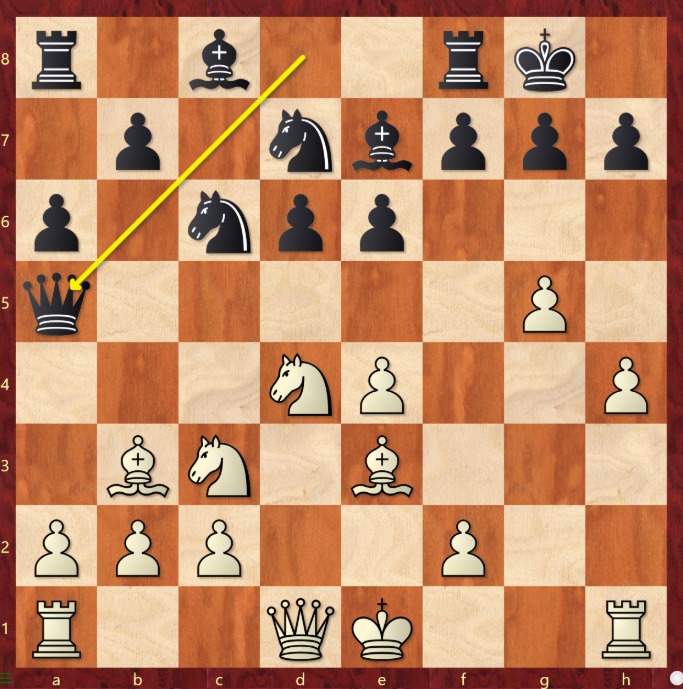
The position arose from the 6. Bc4 Najdorf. It’s clear that White has gained a few extra tempi with moves like g4–g5, but even so, this position still requires some positional understanding to maintain the advantage.
I played 1. Qf3 after a very long think. While making the move, I knew it wasn’t ideal — but I was frustrated, as I simply couldn’t find a good move for White.
As we saw earlier, Black’s plan is straightforward:
1…Nxd4 2. Bxd4 Nc5, followed by b5 and b4, and I needed to find a way to prevent this.
Alternatively, Black can even start with 1…Nc5 against some of White’s slower moves.
During the game, I considered many options: 1. f4, 1. Rg1, 1. Qe2, 1. Qd2, to name a few.
I didn’t take 1. Nxc6 seriously at all, because I felt it would simply lead to a pawn structure more typical of the Classical Sicilian, which I wasn’t aiming for in this game.
So, let me first walk through the ideas behind the non-Nxc6 plans for White.
- 1. Rg1 was probably the easiest move to eliminate. After 1…Nc5, it felt like a complete tempo loss in this particular position.
- 1. f4, with the idea of playing f5, seemed too slow with the king still on e1. I was thinking of lines like 1…Nc5 2. 0-0, and also considered 2. Qd2, but in both cases, 2…Nxd4 followed by e5 made it feel like Black was completely fine.
- 1. Qe2 actually felt like the most natural move to me. In Sozin-type Sicilians (with Bc4), it’s often the ideal square for the queen.
However, I didn’t like 1…Nc5 — and if White continues with 2. 0-0-0, then Nxd4! 3. Bxd4 b5, and I really didn’t like the resulting position.

Black is going to play b4, and in fact, the queen on e2 turns out to be misplaced!
Note: It’s actually better for Black to start with 1…Nxd4, in order to avoid 2. Nxc6 — but as we’ll see, I didn’t consider that at all during the game.
Now let’s come to 1. Qd2, which I believe is the best among all the non-Nxc6 options. So, let’s try to understand why.
After 1…Nxd4, I think this is the most problematic move for White. In this position, White has an extra idea: 1. Qxd4.
I also considered 1. Bxd4 Nc5, but even then I couldn’t quite figure out how White is supposed to stop b5 and b4.
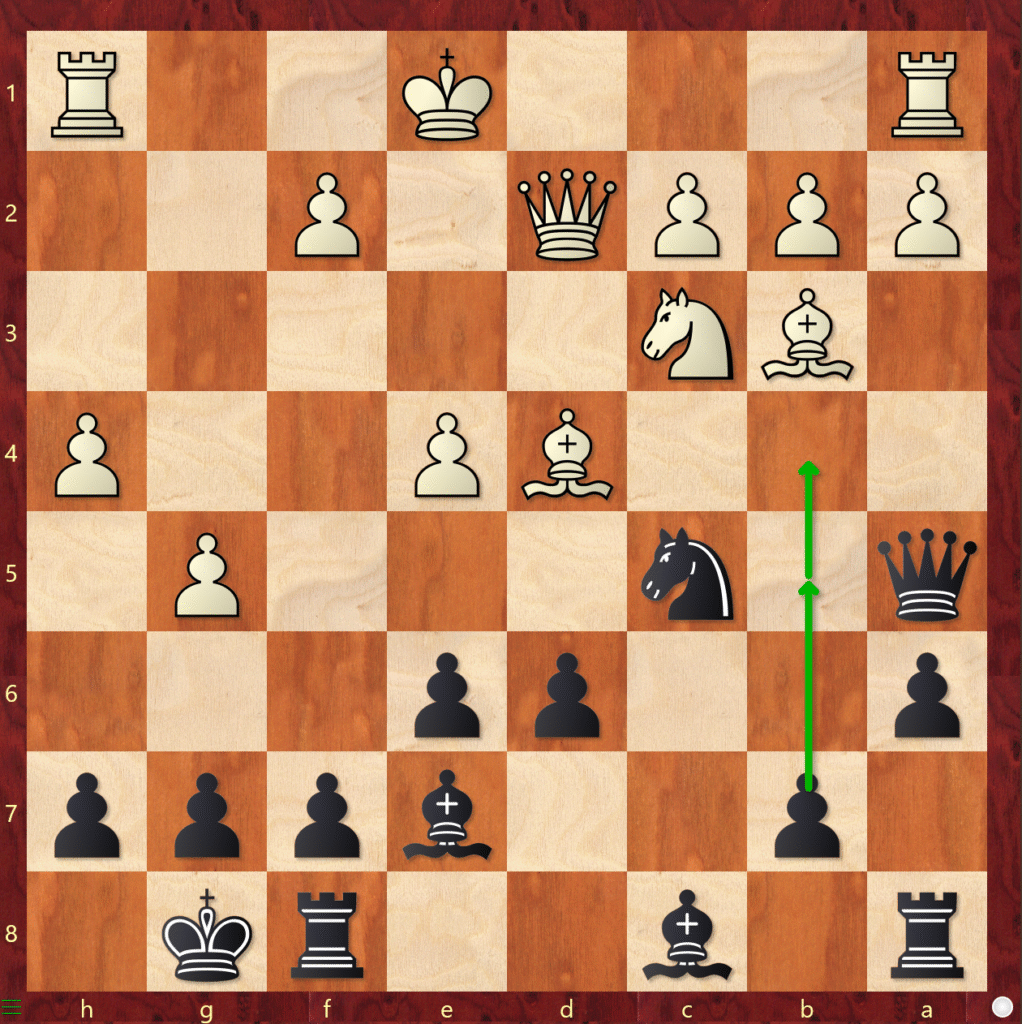
In fact, there’s no real way for White to stop it, and Black is completely fine.
So, what’s the difference with 2. Qd4?
Let’s take a look: 2. Qd4 Nc5 3. 0-0-0 b5 — and now White plays 4. h5!, which seems logical.
But after 4…b4, the question is: How should White continue?
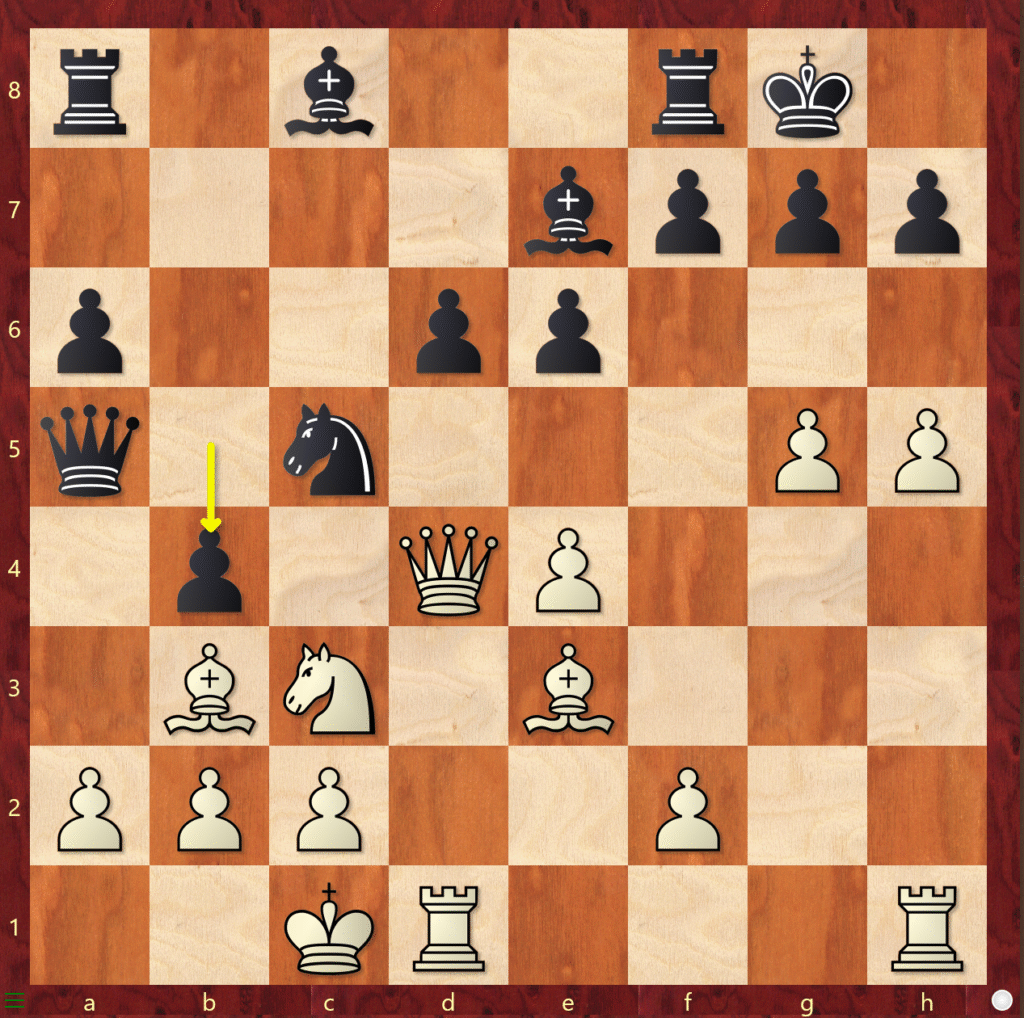
This variation works for White only because of the resource 1. h6! e5 2. Nd5!!
If exd4, then 3. Ne7+ Kh8 4. hxg7+ Kxg7 5. Bd4, and Black is getting mated soon.
I completely missed this Nd5 idea. It’s not that I couldn’t visualize the tactic—I’ve seen similar themes in puzzles before—but the key was recognizing it a couple of moves earlier, not once it was already on the board. Constructing that sequence from the starting position was the hard part.
Now, coming back to other strong options:
1. Nxc6 is a good move as well! After 1…bxc6, a simple follow-up like 2. Qd2 is enough. White will castle and then look to play on the kingside with ideas like h5–g6, or f4–f5, depending on how the position develops.
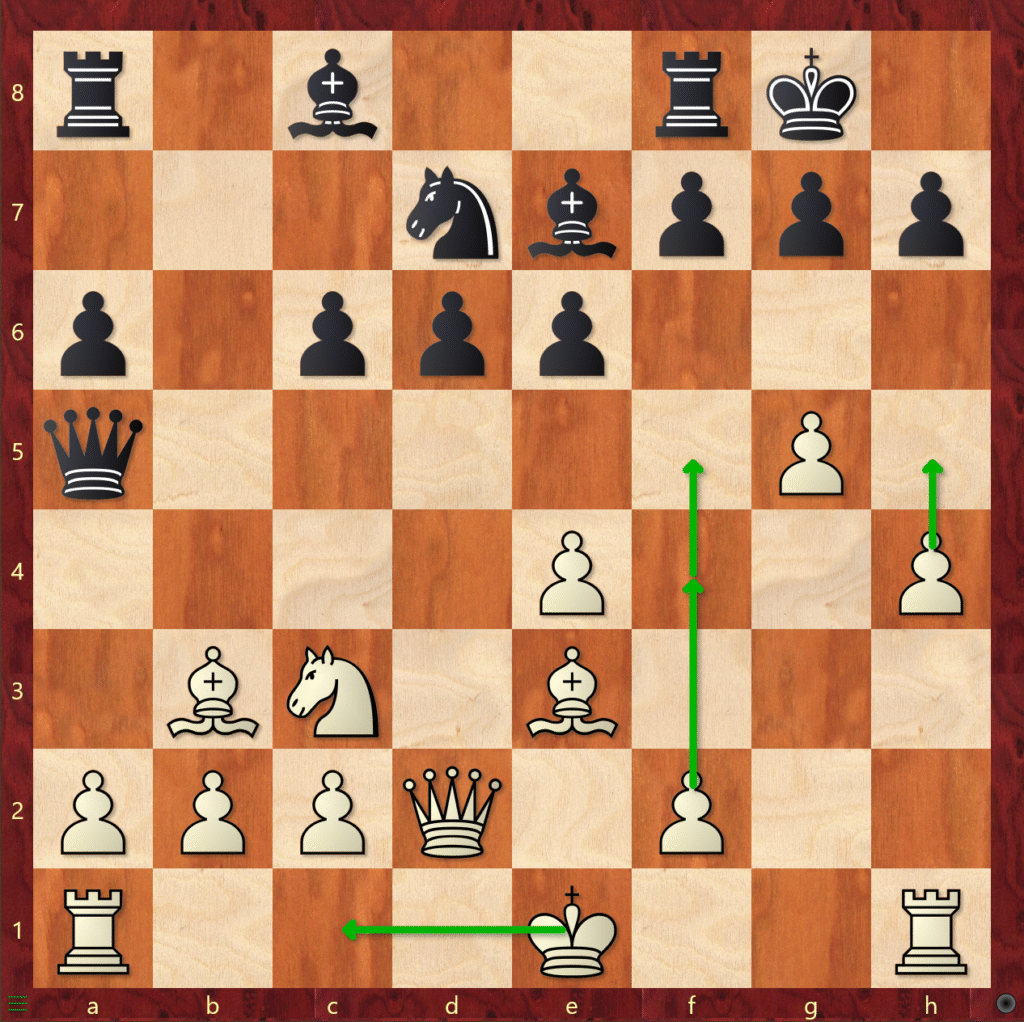
The problem for Black in this position is that it’s very difficult to create counterplay. For example:
2…c5 can be played, but it’s fairly easy for White to deal with. If needed, White can go with Qe2 and simply stop c4.
2…d5 is similar — White will likely just ignore it with 0-0-0. If chess rules allowed it, Black would love to play c5 and c4 in one go here — but that’s not possible. So, will White just continue with their own plan? Most likely, yes.
So, is this Nxc6 → bxc6 strategy only applicable in this specific line? Not at all.
There’s a very strong sideline in the Classical Sicilian that follows a similar strategic idea. It goes:
1. e4 c5 2. Nf3 d6 3. d4 cxd4 4. Nxd4 Nf6 5. Nc3 Nc6 6. Bg5 e6 7. Qd2 a6
And now: 8. Nxc6!? bxc6 9. 0-0-0 Be7 10. Bxf6 gxf6 11. Bc4! followed by Bb3
This isn’t exactly the same idea, but there are clear similarities. In this case too, one of the main reasons the position can be good for White is that Black struggles to generate real queenside counterplay.
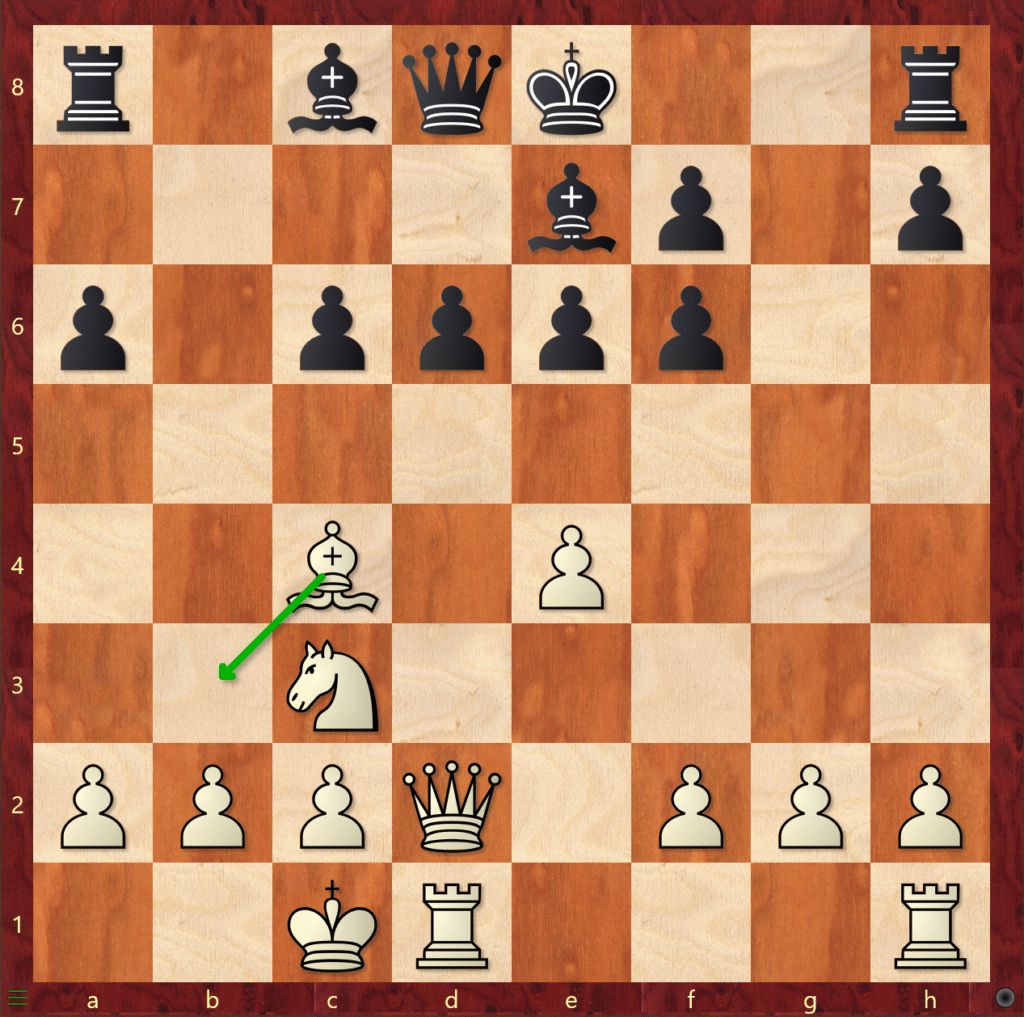
This variation caught my eye after seeing some correspondence wins by a player named Kruse H.
Normally, I don’t remember names, but this guy had a 2700 rating in correspondence chess — and that too, fairly recently. It could be a glitch in ChessBase or an online database, but either way, he seemed like a very strong correspondence player.
But let’s come back to the game.
According to the engine, White can enter these Nxc6 structures after 1. f4 or a few other moves as well — but alright.
After all that thinking, I was a bit frustrated and decided to just play a logical move without worrying too much about maintaining an advantage. That’s why I played 1. Qf3.
As we’ve seen, the best response is 1…Nxd4! 2. Bxd4, and then Nc5. But my opponent played 1…Nc5 directly.
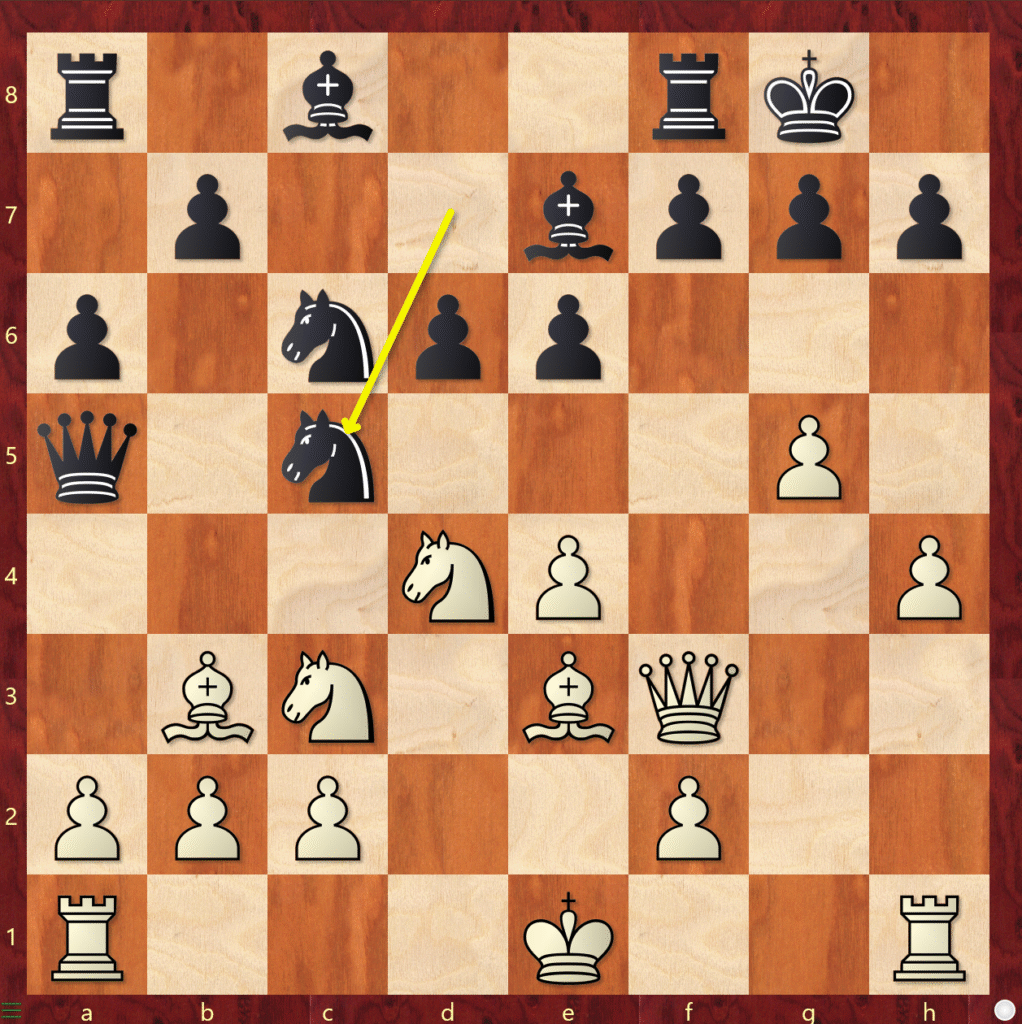
What should White play here?
I’m sure you guessed it right: 1. Nxc6! bxc6 2. Bxc5 Qxc5 3. 0-0-0
This is similar to structures from the Classical Sicilian, but without the doubled pawns.
Please note: you’re not playing purely for an all-out attack here. It’s a more positional approach — White will try to create weaknesses in the center with f4–f5, or find other strategic ideas depending on how Black responds.
In my game, I played 2. 0-0-0, and after Nc5, once again the question is:
What should Black play here?
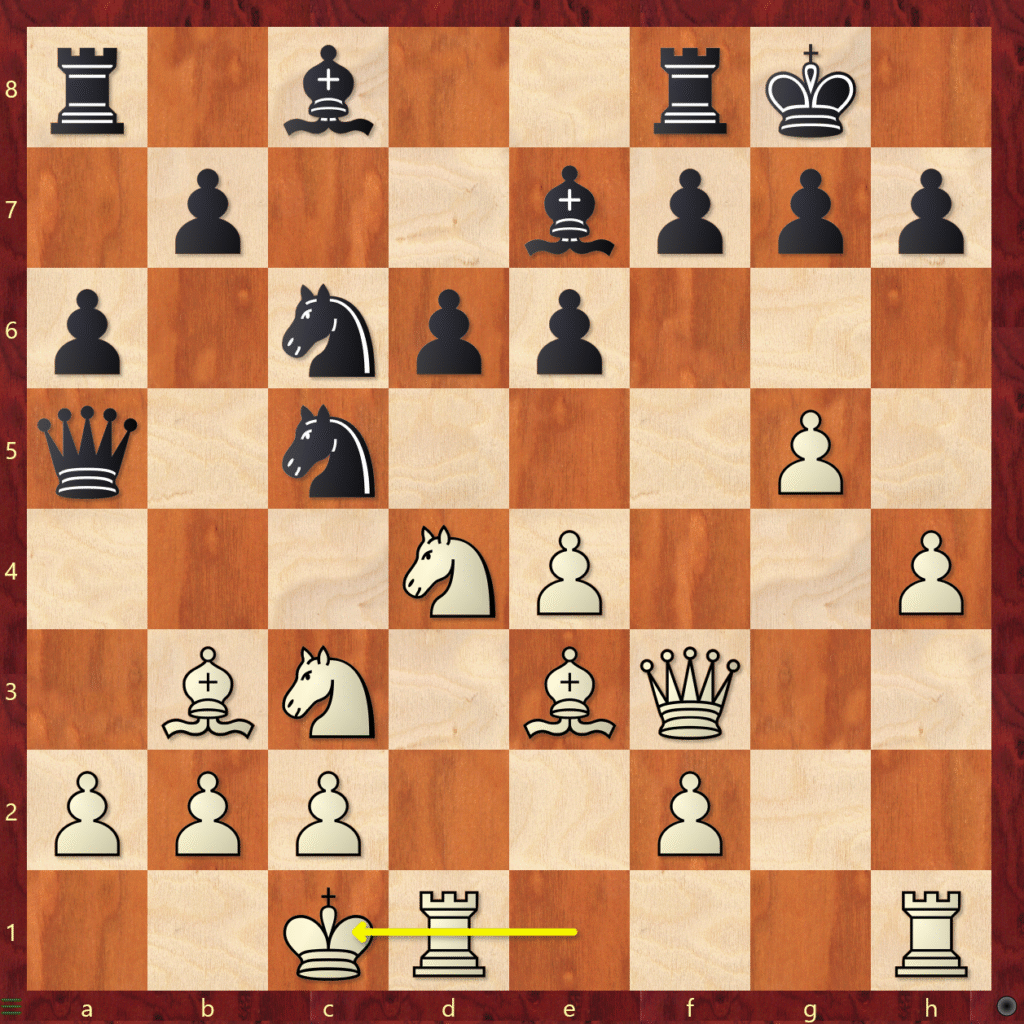
Nxd4 and b5 again!
Chess is simple—but hard.
There were some inaccuracies in the next few moves as well, but I’ll skip over those and move straight to the next test position. Here’s how the game continued:
3…Bd7 4. Kb1 Rac8 5. Rhg1 b5
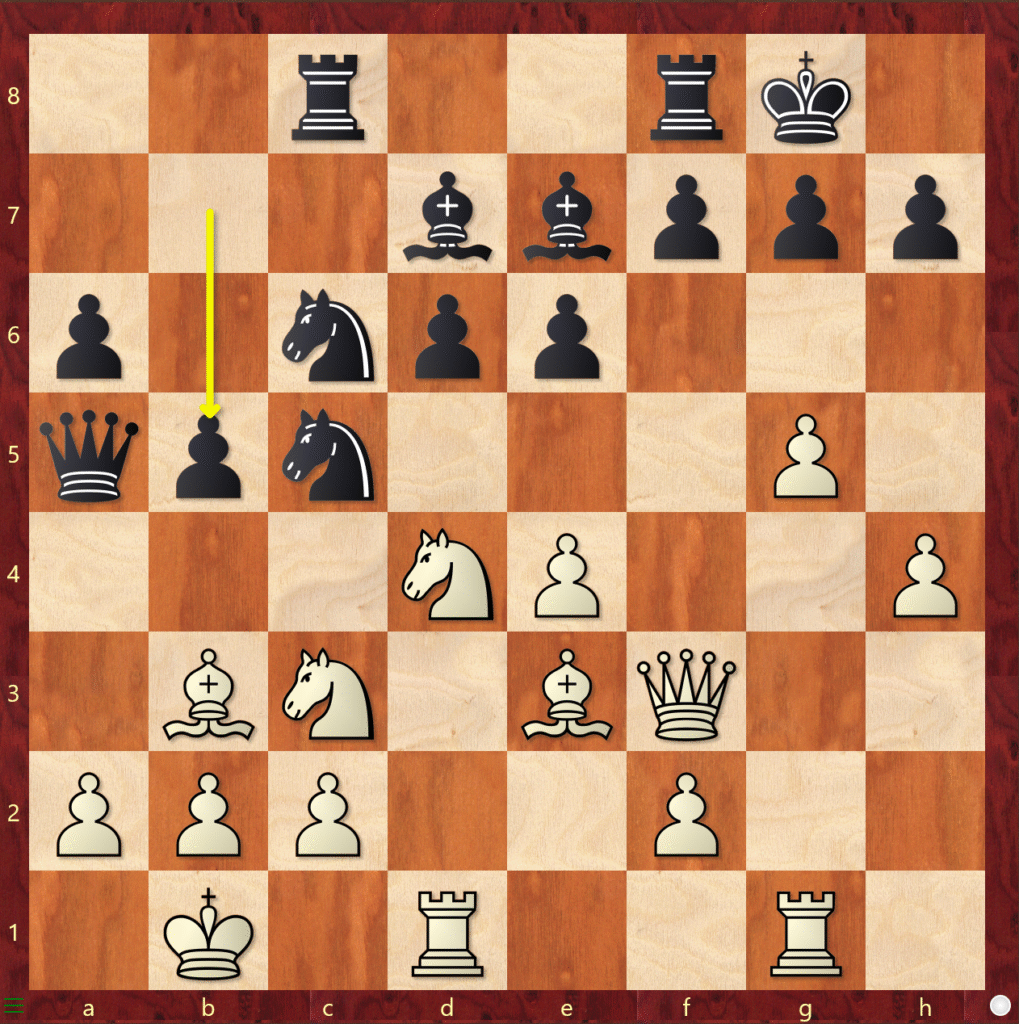
White should play 6. Nxc6 here as well! But this time, the idea is a bit different.
If Black recaptures with 6…Rxc6, White has several strong options. One interesting idea is 7. e5!? — and if Black responds with d5, then 8. Bxd5 gives White a huge advantage.
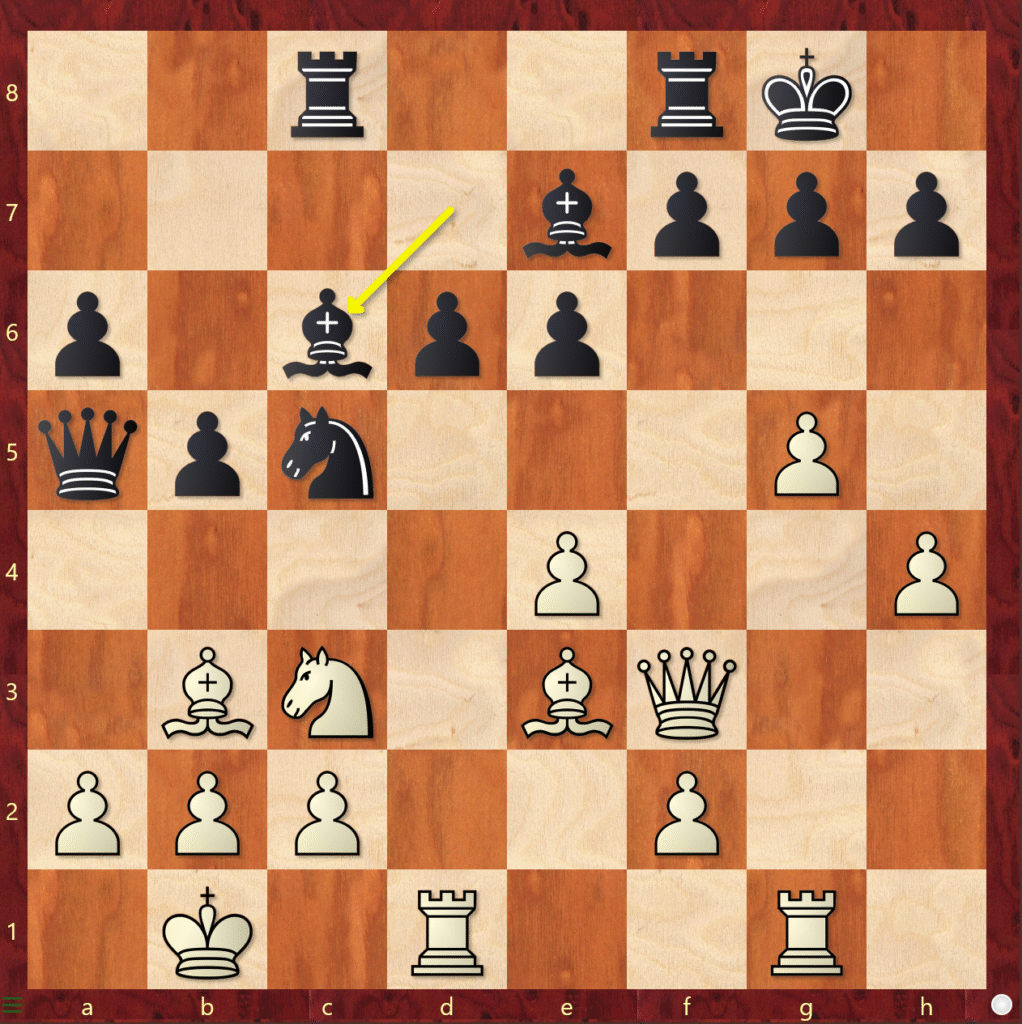
Here we come to another common theme in the Sozin.
What should White play?
g6!
Let’s look at a few possible responses:
- 1…hxg6 2. h5 — and White is threatening mate.
- 1…Nxb3 2. gxh7 Kh8 3. Rg7 — you can calculate the rest from here.
- 1…fxg6 2. Qh3 (or Qg4) — the e6 pawn is hanging, and h5 will soon follow!
Finally, let’s go back to the…starting positions to see if you have learned enough from this article
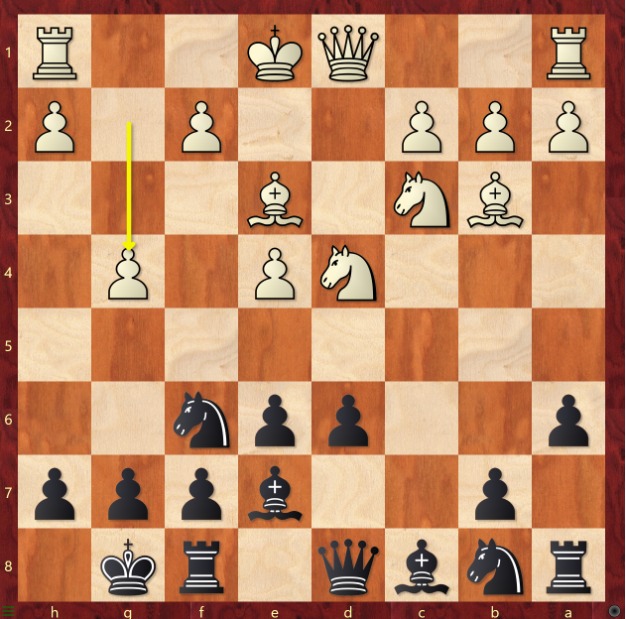
What’s Black’s best move in this position? There are two reasonable options, but let’s see if you can find the one I’m looking for.
The best move is 1…Nfd7!
What’s the idea behind it? We return to the same strategic plan: we want to reposition the knight to c5 as quickly as possible to directly challenge White’s bishop on b3, which has the potential to become a serious long-term threat.
The engine also suggests 1…d5, which leads to a slightly worse position—but let’s set that aside for now.
Yes, 1…Nfd7 does allow Bxe6, but Black is holding up just fine in those lines.
In my game, my opponent played 1…Nc6 2. g5 Nfd7.
Let’s move on to the next—and final—test position.
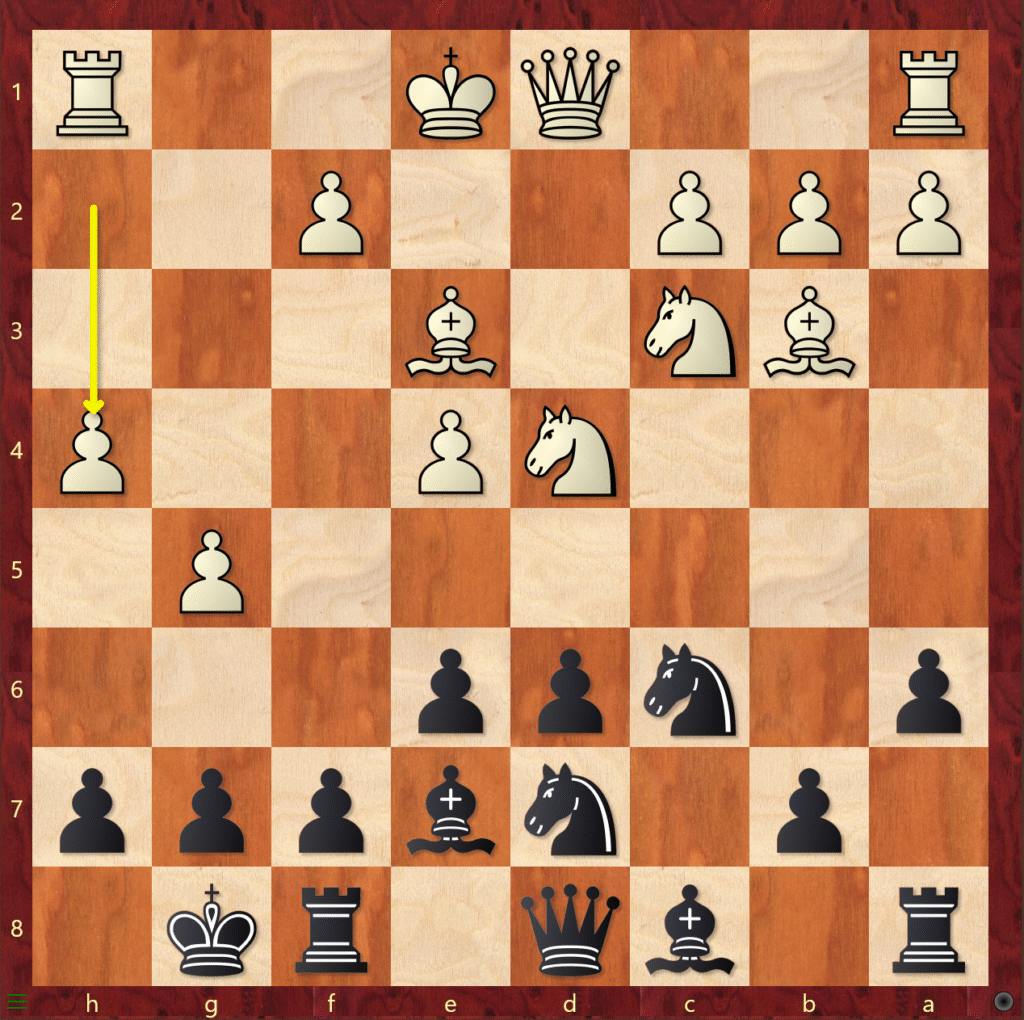
We all know that Black played Qa5 here—but the best move once again is Nc5!
My opponent was probably concerned about the line 1…Nc5 2. Nxc6 bxc6 3. Bxc5, leading to an endgame. It’s true that White holds a slight edge there, but Black has solid defensive resources. It shouldn’t be considered overly dangerous.
This led me to a million-dollar question:
Can this knight maneuver to c5 be used in all Sicilians when the bishop is on b3?
As it turns out, this idea has been around for ages. It’s just that many of us blindly follow theory without fully understanding the underlying plans.
Let’s take the first example:
e4 c5 2. Nf3 d6 3. d4 cxd4 4. Nxd4 Nf6 5. Nc3 a6 6. Bc4 e6 7. Bb3
This is the old main line of the Sozin Variation.
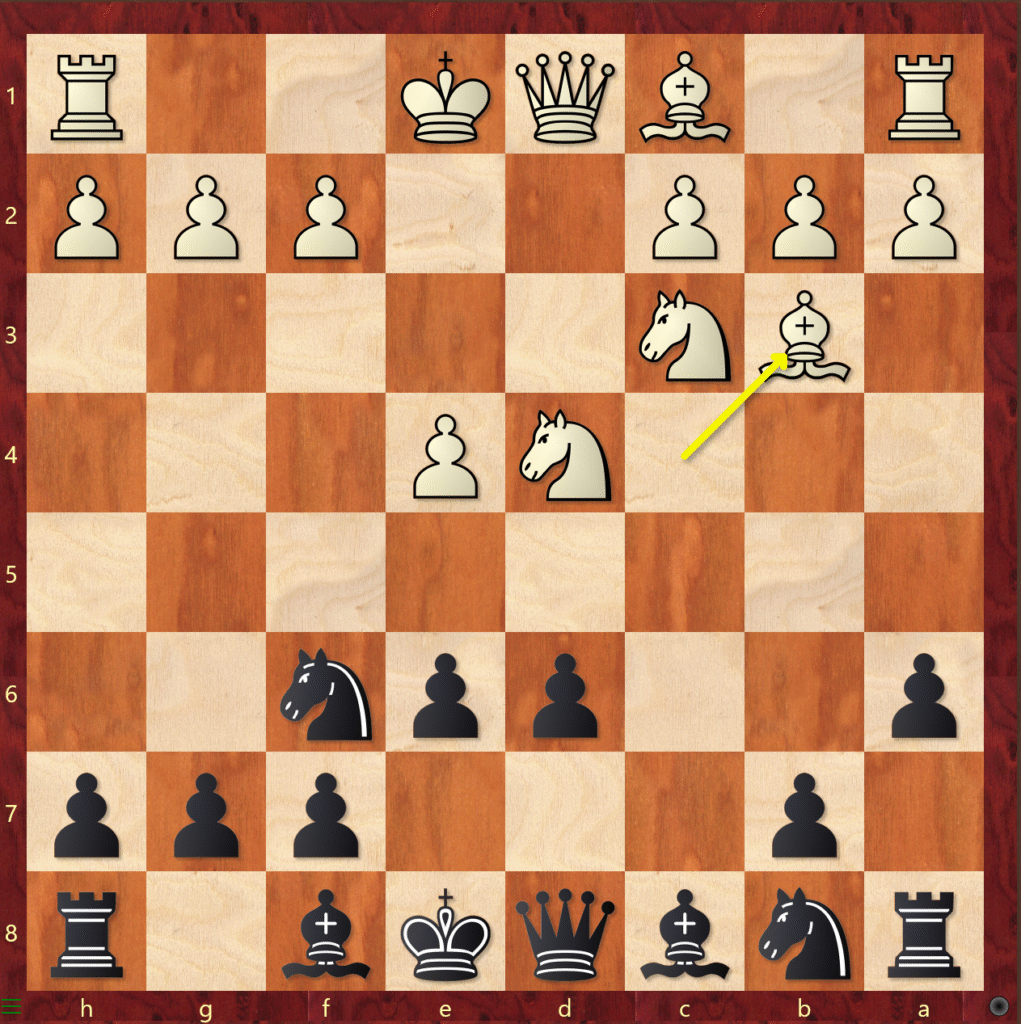
There are two main lines here—but what would you play?
Yes! 7…Nbd7 followed by Nc5 is one of the mainlines. It’s been played by Kasparov and many other top players.
As a sidenote, I highly recommend studying Topalov vs Kasparov in this Nbd7 line. It’s a true masterpiece by Topalov and shows how deeply this variation can be understood and played.
Now, let’s look at another example:
e4 c5 2. Nf3 d6 3. d4 cxd4 4. Nxd4 Nf6 5. Nc3 a6 6. Bg5 Nbd7 7. Bc4
I’ve had two painful losses from this position. The best move here is 7…Qb6. But have you ever wondered why?
Usually in the Sicilian, Qb6 is played to provoke Nb3, and then the queen retreats to c7. But in this case, we’re forcing Bb3—a move White is likely to play anyway. So it’s not about provoking a weakness, but about improving move order and gaining time.
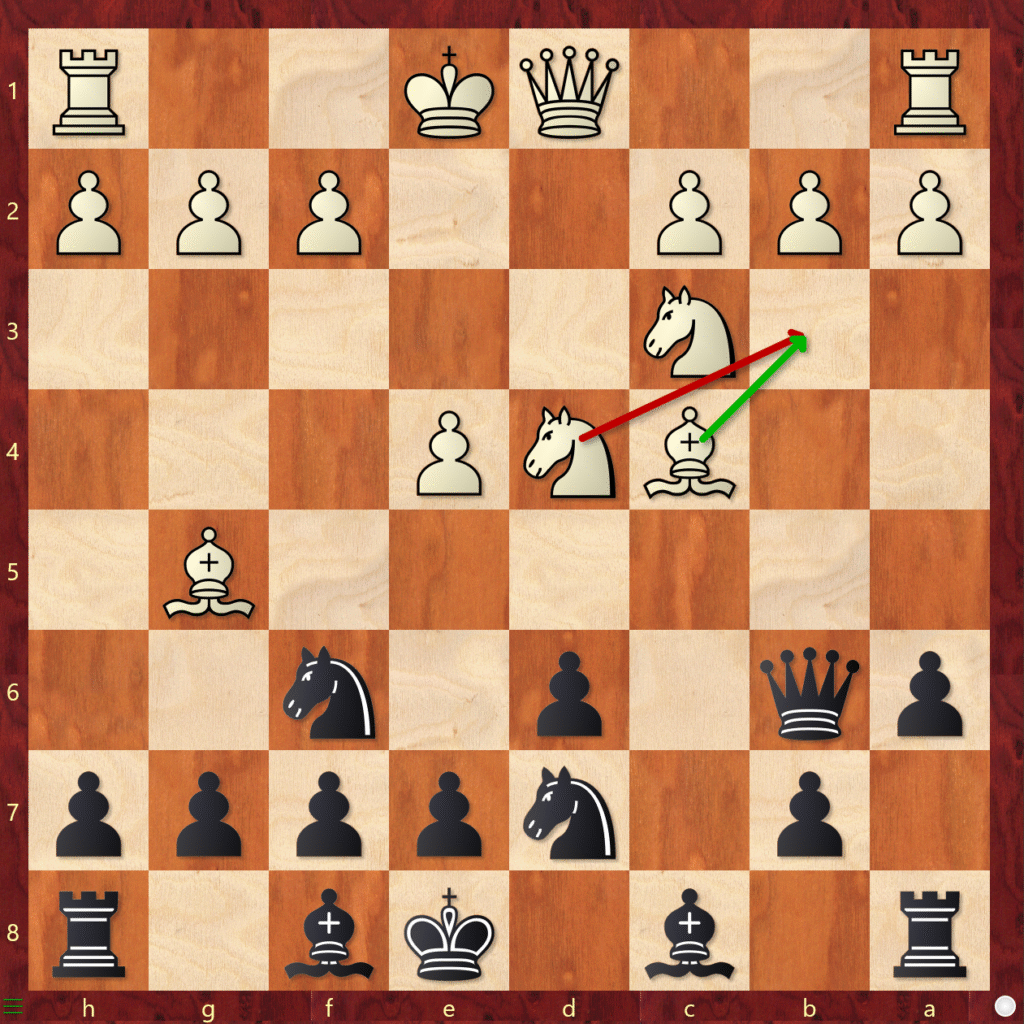
The reasoning here is a bit subtle, but at the end of the day, Black’s main goal is to get the knight to c5. Another important point is to prevent White from playing Qe2, which supports a dangerous attacking setup.
Let’s break these ideas down more clearly. To do that, we need to understand what happens if Black plays e6, followed by typical moves like Be7, Qc7, and Nc5.
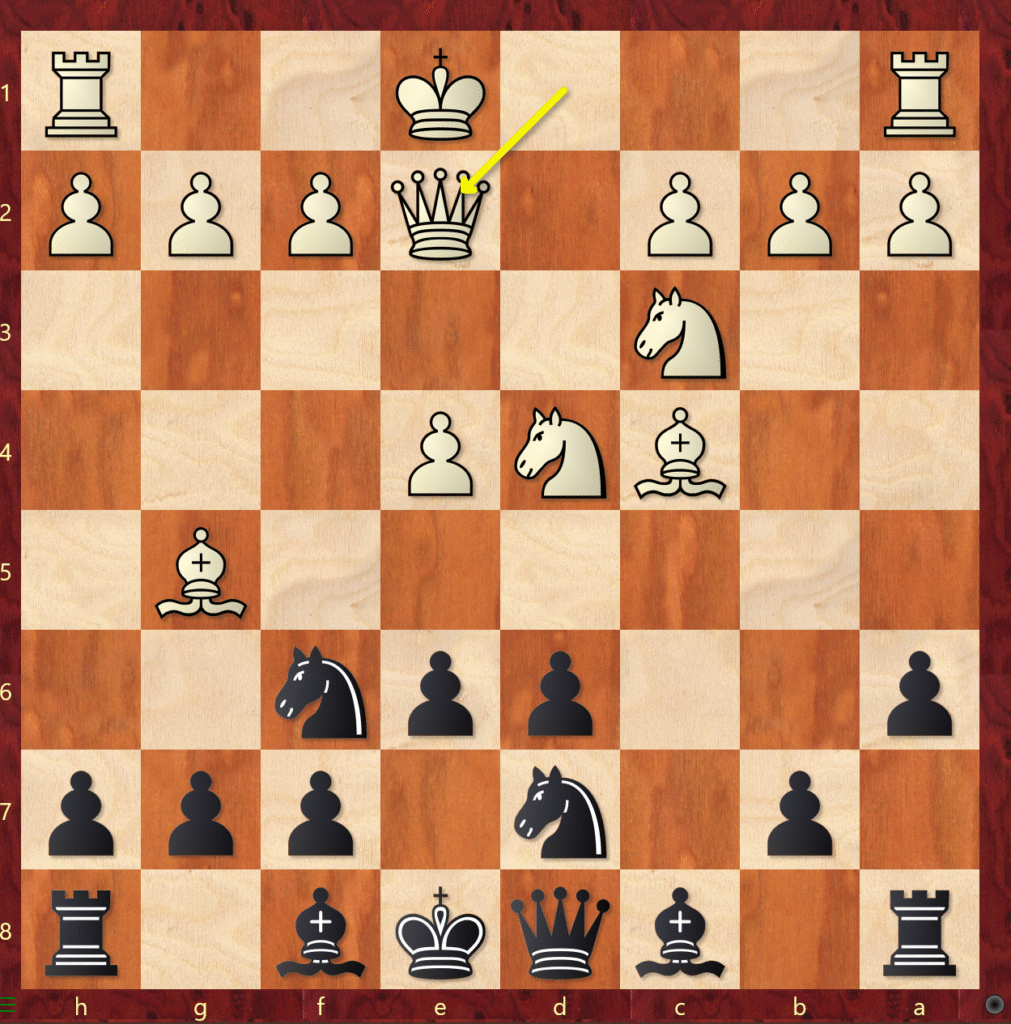
if Black plays 7…e6, White responds with 8. Qe2! — a strong move (note that 7…Qb6 would prevent this). Now, White’s idea is to castle queenside with 0-0-0 and strike in the center with f4–e5, or consider ideas like Nd5 depending on how Black proceeds.
The move 8…Be7 would be met by 9. Bxe6, so it’s essentially off the table.
After 8…Nc5, then 9. 0-0-0 follows, and the position already looks very dangerous for Black due to looming e5 threats.
If Black instead plays 8…Qc7, White continues with 9. 0-0-0, and again, Black has to constantly watch out for tactical shots like Bxe6 and related ideas.
So, while 7…e6 isn’t necessarily bad—it might be slightly dubious—it’s not outright losing. Black could consider continuing with 8…b5 or 8…h6, but both options carry significant risk.
That’s why the move 7…Qb6 followed by 8. Bb3 e6 is more solid. It eliminates the Qe2 idea and the 0-0-0 setup for White. It also neutralizes the Bxe6 resource. From there, Black can continue with Be7 and Nc5, returning to a more comfortable and familiar setup.
Let me summarize,
- Putting a knight on c5 is usually an excellent idea in Bc4 Sicilians, especially the Sozin Variation.
- However, be careful not to give up the initiative while trying to achieve this plan. Timing matters.
- The move Nxc6! (especially when it forces bxc6) is often a strong strategic idea for White.
- It can leave Black with structural weaknesses and long-term targets.
- If you’re playing White, consider adding Nxc6 to your Sicilian toolkit.
- If you’re playing Black, be cautious about allowing Nxc6, especially if your position is uncoordinated.
- These strategic ideas appear in many Sicilian lines — not just the Sozin.
- But always calculate and evaluate each position carefully — there are many exceptions, and no idea works automatically.
I hope you found this breakdown helpful and that it gave you some useful insights into key Sicilian structures and ideas. If it helped clarify anything or sparked new thoughts in your own games, that’s already a win.
If you enjoyed the post or learned something from it, I’d really appreciate your support—whether it’s sharing it, leaving feedback, or simply following along for more. Thanks for reading, and good luck in your own battles over the board!
Read more of my articles here:-
Leave a Reply